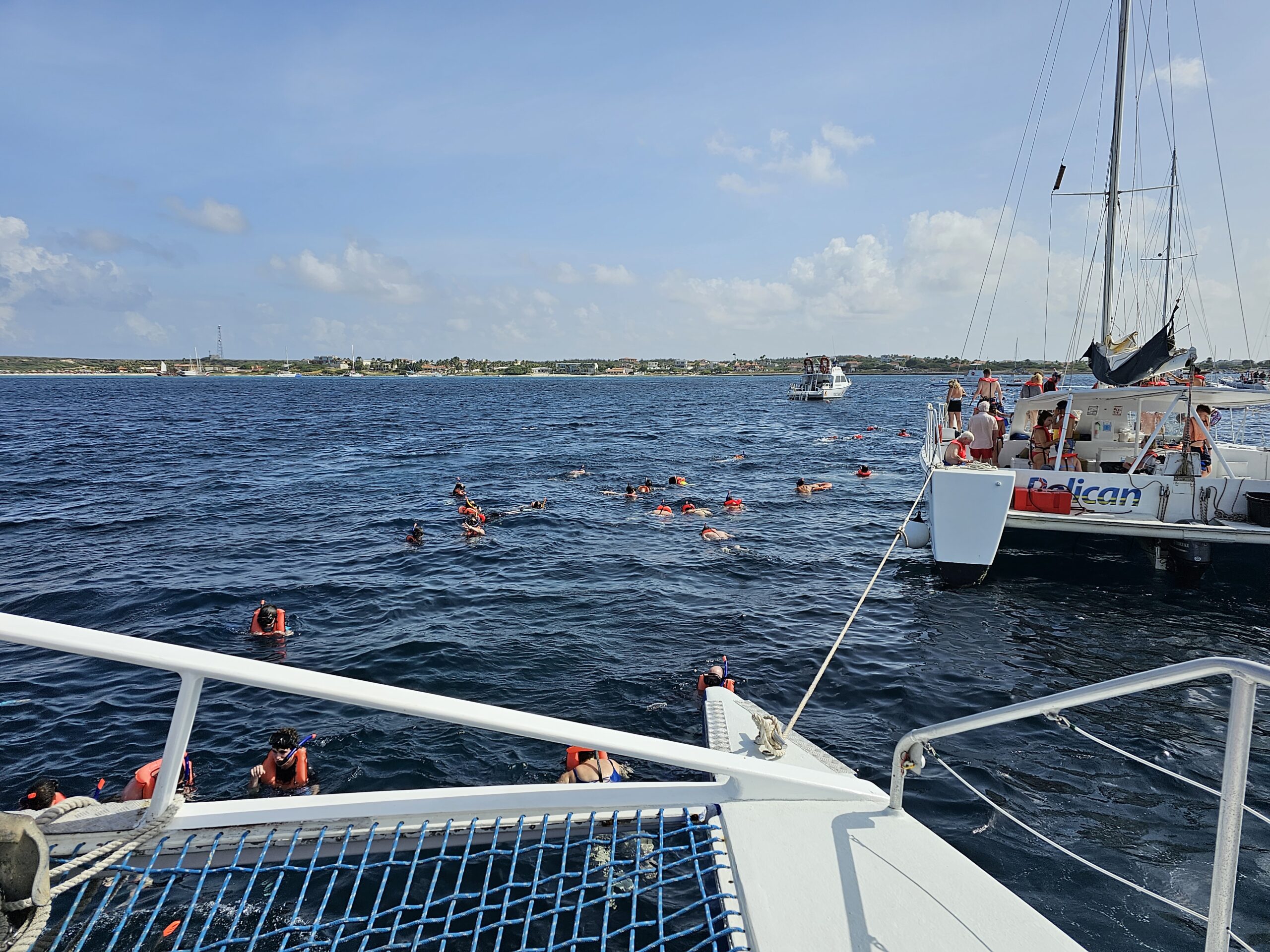Snorkeling is a popular activity that frequently features in cruise excursions, inviting adventurers to explore the vibrant underwater world. But what if you can’t swim? You’re not alone in wondering if snorkeling is still an option.
Many people share the desire to experience the beauty beneath the waves but are concerned about their swimming abilities. The good news is that you can snorkel without knowing how to swim, provided you take the proper precautions and use the right equipment.
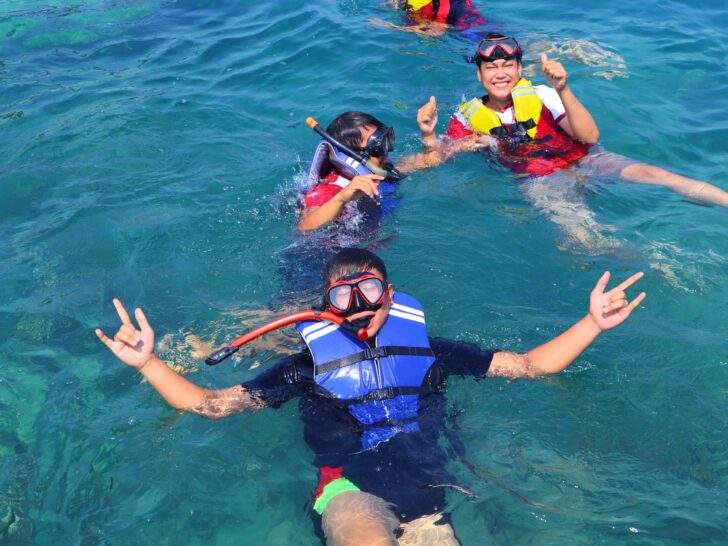
Speaking from personal experience, by preparing well and following basic safety measures, you can turn your snorkeling trip into a fun and memorable adventure. Now, let’s dive in and explore how you can enjoy snorkeling without being an expert swimmer.
Key Takeaways
- Non-swimmers can snorkel with the right gear and precautions.
- Flotation aids such as life jackets or snorkeling vests are a necessity.
- Going to a pool or a calm, shallow beach to practice can help reduce anxiety. These environments are safe and less intimidating, allowing you to build up your water confidence.
Understanding Snorkeling Basics
It’s important to know what snorkeling involves, how it compares to swimming, and the role of different equipment.
What Is Snorkeling?
Snorkeling is where you swim on the water’s surface while wearing a mask, snorkel, and usually fins. This allows you to observe underwater life without diving deeply.
You breathe through the snorkel, a tube that extends above the water’s surface. Snorkeling is often done in shallow waters, which makes it accessible to more people, even those who aren’t strong swimmers.
Comparing Snorkeling with Swimming
Swimming requires strong strokes and the ability to stay afloat. Snorkeling does not need as much physical exertion. With snorkeling, you can use a life vest to stay afloat, making it easier.
While swimming focuses on movement through water, with snorkeling you can choose to just float and observe the underwater world.
The Role of Equipment in Snorkeling
The right equipment makes a big difference in snorkeling.
- Masks let you see clearly underwater and protect your eyes.
- A snorkel enables you to breathe while facing down in the water.
- Fins help you move smoothly with little effort.
- Floatation devices, like life vests, can be used for added safety.
Understanding how to use each piece correctly is important for a good experience.
Pushing Fear Aside
As a non-swimmer I used to think that snorkeling in the ocean – where you can’t touch safe ground with your toes – was out of the question. I was persuaded otherwise by a patient and experienced guide who urged me to actually get in the water rather than stay on the boat snapping photos as I had originally intended. Once he promised to stay by my side, literally holding both my hands the entire time if necessary, I agreed to step off the boat into the bottomless ocean.
My fears melted away as soon as I saw the mesmerizing world beneath the surface – a whole new world that was completely accessible to me despite my lack of swimming ability.
My journey from the deck of that boat into the depths of the ocean taught me a valuable lesson: with the right support and safety measures, the underwater world is accessible to everyone, fears notwithstanding. So, if you’re a non-swimmer, try pushing past any perceived limitations and embrace this new experience.
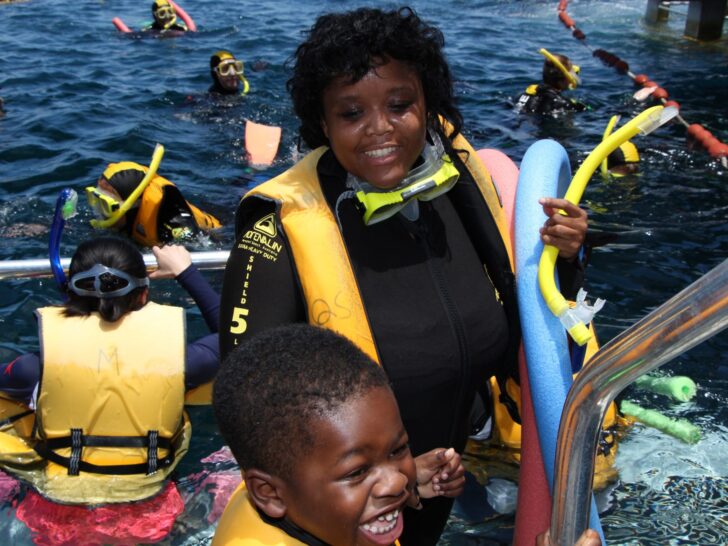
Required Gear for Non-Swimmers
Snorkeling as a non-swimmer can be safe and enjoyable with the right equipment. The key lies in selecting suitable snorkeling gear and using flotation devices for added safety.
Choosing the Right Snorkeling Gear
Picking the right snorkeling gear is essential for a good experience. Start with a well-fitting snorkel mask that doesn’t leak.
What about a full-face mask?
You have the option of getting a full-face mask, but the reviews on these are mixed. In theory, a full-face mask makes breathing easier because it covers your whole face.
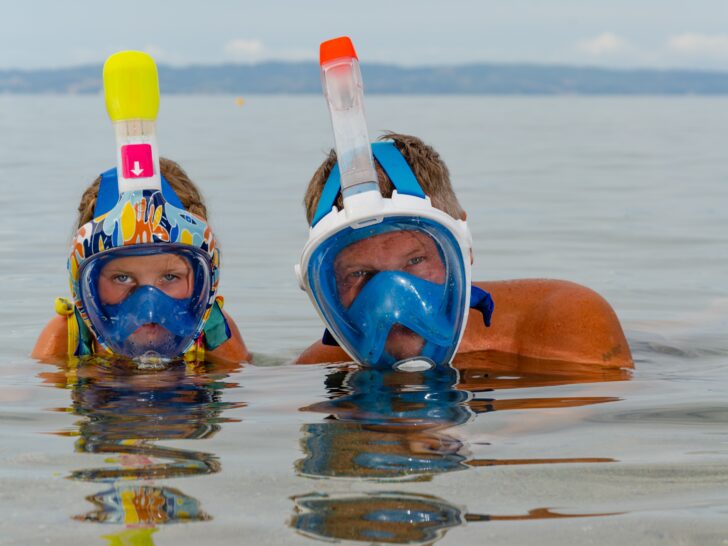
Full-face snorkel masks have been associated with several safety concerns. One major issue is the risk of shallow breathing due to the design of the breathing mechanism. This can lead to hypercapnia (excessive carbon dioxide in the bloodstream) and possibly hypoxia (insufficient oxygen). Additionally, some poorly constructed masks can have problems with leaking, fogging, and dry snorkel failures, which may cut off breathing or flood the mask.
So, while full-face snorkel masks can be safe when chosen carefully and used properly, they come with risks that you should be aware of.
Choices for snorkel tubes
Snorkel tubes come in several different types, each designed to enhance the snorkeling experience in various ways:
- Classic Snorkel: This is the most basic type of snorkel, consisting of a simple J-shaped tube with a mouthpiece. It does not have any special features to prevent water from entering the tube.
- Semi-Dry Snorkel: This type of snorkel includes a splash guard at the top to reduce the amount of water that enters the tube from waves or splashing. However, it does not completely prevent water from entering when submerged.
- Dry Snorkel: A dry snorkel features a valve at the top that completely seals the tube when it is submerged, preventing water from entering. This allows the snorkeler to dive below the surface without getting water into the snorkel.
Each type of snorkel tube has its own advantages and is suited to different snorkeling conditions and personal preferences.
Using Floatation Devices for Safety
Flotation devices are an absolute must for non-swimmers. A life jacket is one of the most important items to have. It keeps you afloat and adds a layer of safety. Make sure to choose a life jacket that fits well and is comfortable to wear.
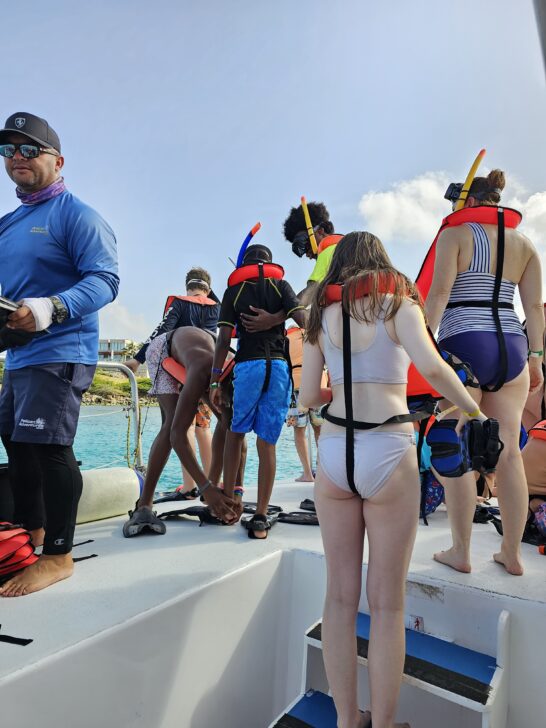
Another option is a snorkeling vest. These vests are less bulky than life jackets but still provide enough buoyancy to keep you safe. Some vests are inflatable, allowing you to adjust buoyancy as needed. The disadvantage of a snorkeling vest is that they are not designed to keep your head above water in rough conditions, or if you are unconscious so they should really only be used in calm waters.
A flotation belt can also be used, but they don’t provide as much support, so it shouldn’t be used in water where you can’t touch the bottom.
To snorkel confidently when you don’t know how to swim, you should ideally have a chance to get comfortable with the equipment and how it works.
Snorkel Without Knowing How to Swim: Practical Tips for First-Time Snorkelers
As a beginner, choose calm, shallow waters for your first snorkeling experience. This reduces risks and makes it easier to handle.
Learn the correct way to breathe through the snorkel. Start by practicing on land. Inhale and exhale deeply and slowly through the mouthpiece.
Once comfortable, try breathing with the snorkel in shallow water. Focus on calm, steady breaths to prevent panic.
Stay close to the shore to increase your confidence and safety. Have a buddy with you who can swim and provide guidance if needed.
Snorkeling Tours and Guided Experiences
Joining a snorkeling tour can be a great way to have a safe and enjoyable time in the water, especially if you can’t swim well. Guided tours often provide you with equipment, instructions, and support from experienced professionals.
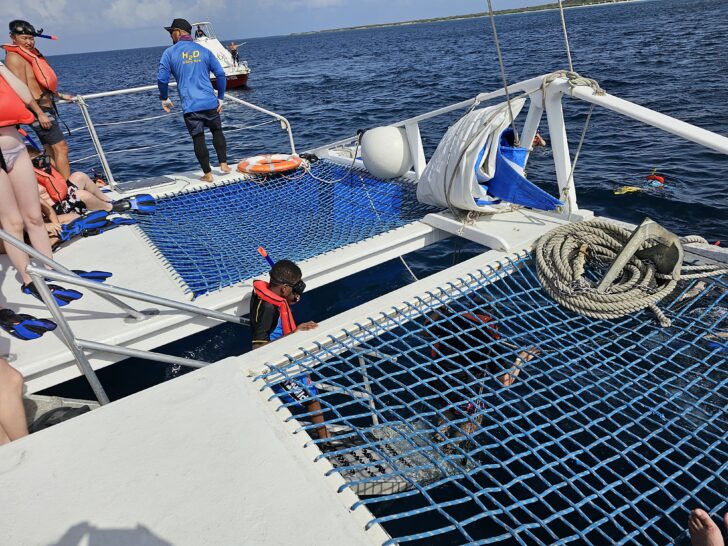
Guides provide safety instructions and stay with you throughout the activity. These tours often use boats with ladders for easy water access.
Closing Thoughts
Snorkeling without knowing how to swim is entirely possible and can be a delightful experience if you take the right precautions and use the right gear. So, don’t let a lack of swimming skills deter you from exploring the fascinating marine life.

Elaine Warren
Founder & Crew Chief
Elaine founded this website after publishing the book The Family Cruise Companion’s Guide to Cruising With Kids. (Second edition recently released!) She has sailed on 45 cruises (and counting). She loves helping families navigate their way to an adventure-filled, fun, and memorable vacation.

